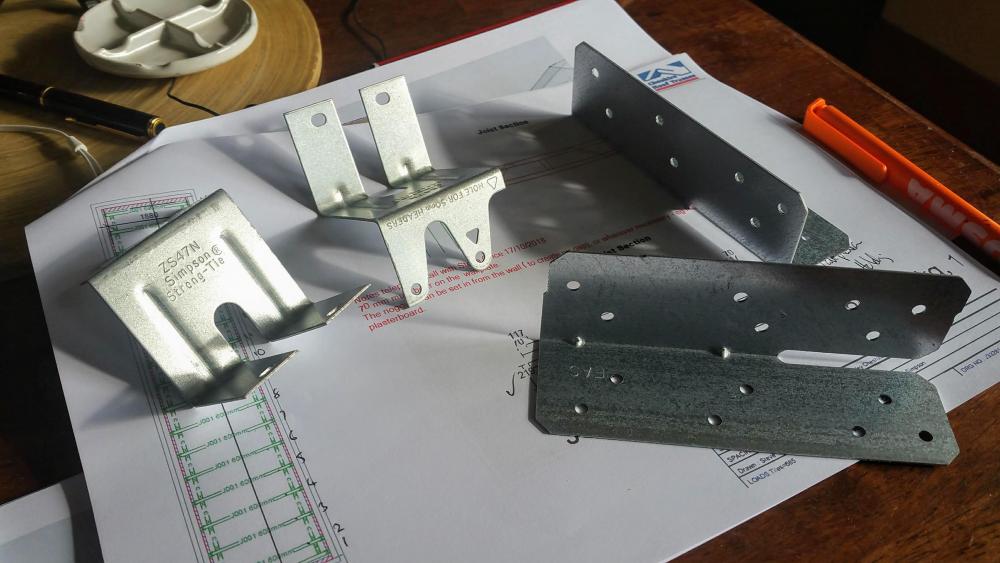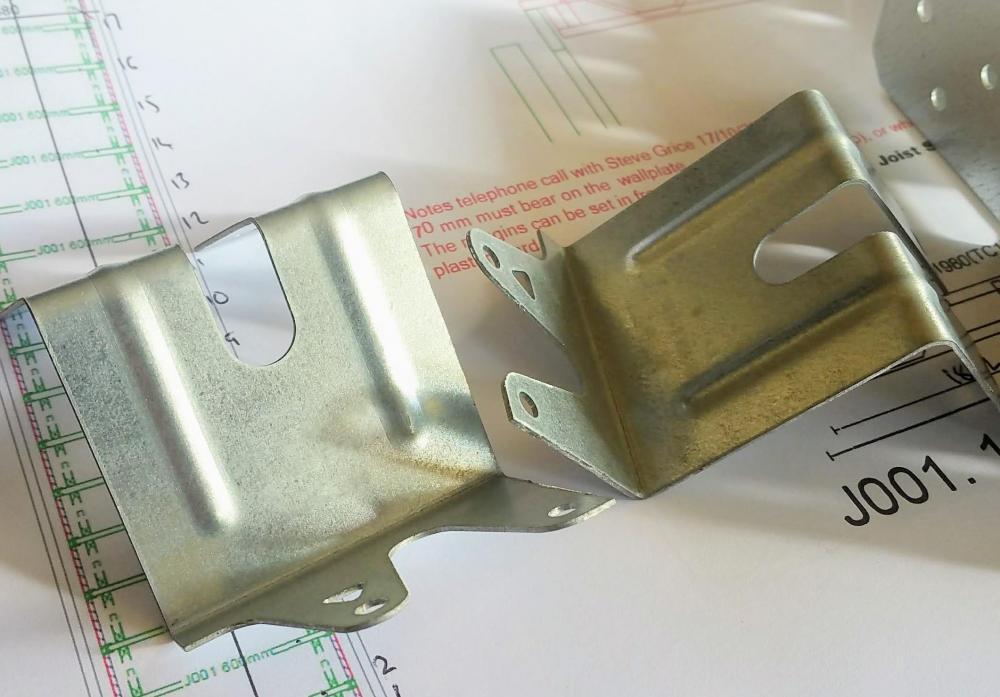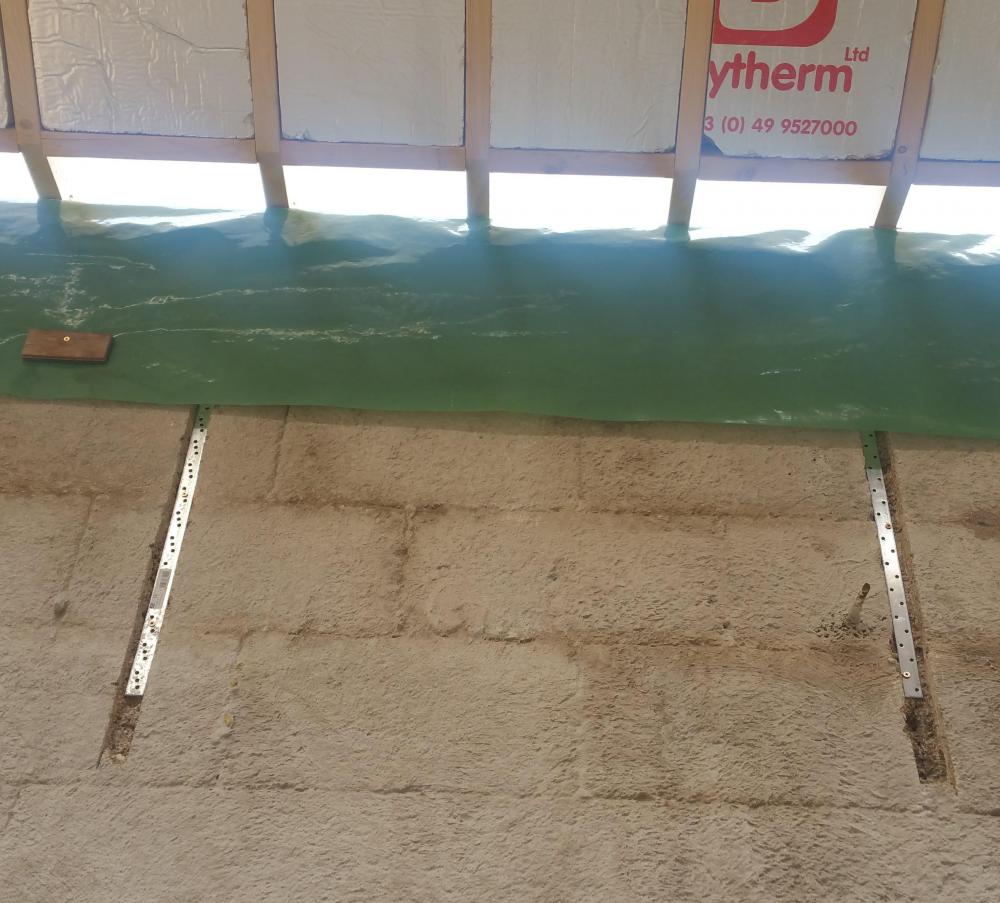Search the Community
Showing results for tags 'rim joist'.
-
Just a quick one: does a wall plate (rim joist) have to be a continuous piece of timber? I ask because a visiting rep asked me if I needed the wall plate to be one continuous piece of timber. Maximum uninterrupted run is just under ten meters. Nowhere in the architect's notes does he mention a continuous run of timber for the wall plate. Thanks. Ian
- 25 replies
-
- wall plates
- rim joist
-
(and 2 more)
Tagged with:
-
I've done my best not to bother you all with this question, but..... I'm not far off fitting my wall plate - and thus my joists for the little (steeply sloping) flat roof. Joists and wall plate on site, just waiting for the concrete to dry a bit. And of course, its DIY The nice folks from Cheshire Roof Trusses sent me the necessary ironmongery. Here it is. This sooooo embarrassing ......... Which way up do I use the Simpson Strong Tie? ? Should the stamped ridge face outwards (away from the wall plate towards the joist) like this? A simpler way of asking the question might be either : What does the top chord of the joist sit on: the square tabs or the rounded ones? Or conversely, do the rounded tabs sit on the top of the wall plate or the square tabs? I think I know how to use the corner plates. It's hard work this DIY lark........
- 2 replies
-
- wall plate
- rim joist
-
(and 2 more)
Tagged with:
-
Wallplate fitted, ridge beam fitted (nearly), rafters up, insulation fitted in between. Who's a clever boy then? ? Maybe over-worried about fixing the wall straps through to the concrete, I chased the Durisol back to the concrete and fitted the wall straps direct to it. This is where we are now (looking up from the floor); I need to make good on top of the wall straps. Which ? Foam, Durisol, Sand and Cement? (Can't Avoid.... )
- 10 replies
-
Sometimes you bump into really interesting stuff online..... like this (scroll down to the section headed Wall-Plate) Here's the relevant passage '...In order to make the house air-tight, the wall plates have been installed over a polythene membrane, which is shown tacked down until the construction has proceeded to the point where it can be folded up and over the plywood which will soon cover the ends of the joists. Ultimately it will seal against the plywood decking which will be laid on top of the joists....' (https://edinkist.wordpress.com/diary-of-the-build/) To ensure air-tightness at the wall-plate roof interface, is this method (putting the wall plate on top of a polythene membrane) common? I feel some phone calls coming on.
-
As I suspected, this learning curve really is pretty steep. So in an attempt to make sure that I reduce the number of errors in establishing our first floor at the correct level, I thought it might be an idea to start a thread - hopefully I'll be able to summarise it as a check list later. First: the end in mind Accurately mark out the position of the top of the wall plate (rim joist) such that our 202 POSIs sit at the correct height. Follow this bit of maths through with me please: Assuming the top of the POSIs is the same level as the top of the wall plate , it (the rim joist) needs to be 20mm (the depth of the decking) below FFH; (2350+255); that is (2605-20) = 2585mm above FFL In order to mark it out, since our floor is currently 25mm below FFL (currently we are at sub-floor) we need to add another 25mm = 2610mm above our current floor Naturally, it isn't that simple is it? Our timber spec is C24, treated, 200 by 50. Well wadya know? Timber of that spec isn't. It's less than 200 and less than 50 (195 by 45 ish). Which means the bottom of our POSIs are going to be hanging low (to coin a phrase). Our hanger spec is 200 by 50 Does it matter that the bottom of the hangers are going to be below the bottom of the wall plate?
- 39 replies
-
- rim joist
- wall plate
-
(and 8 more)
Tagged with:




